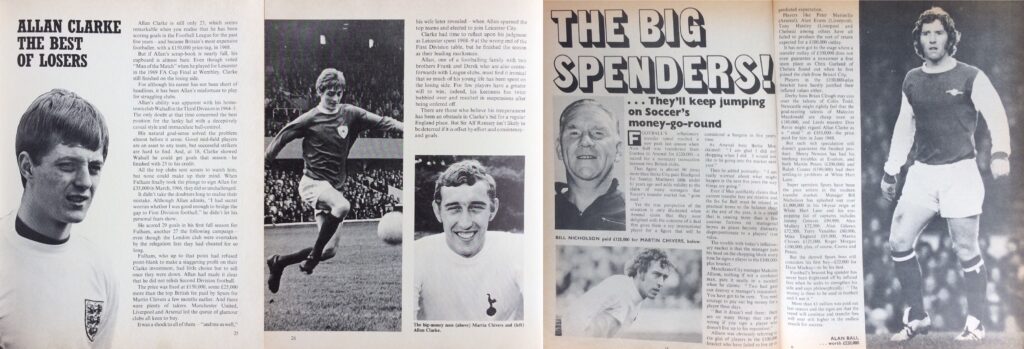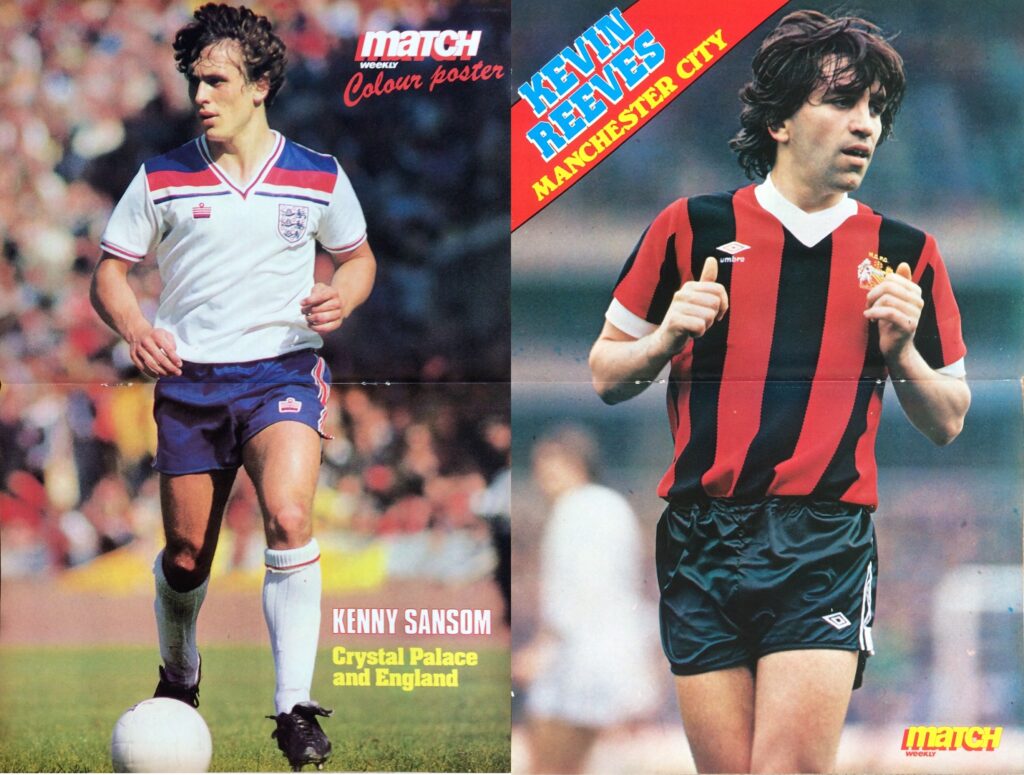The Football League’s First Million-Pound Players
The first million-pound players seemed a distant prospect in the early years of professional football. Yet the history of the Football League’s transfer market was marked by fears of inflation, and clubs recklessly spending beyond their means.
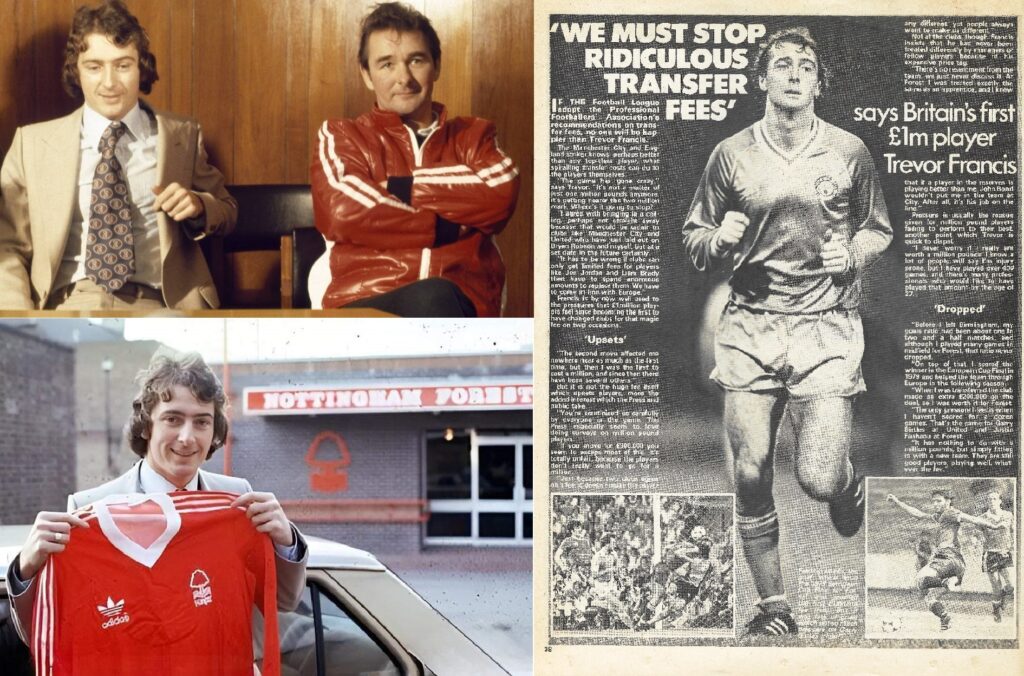
Trevor Francis – the Football League’s first million-pound player
The first £1,000 transfer of Alf Common from Sunderland to Middlesbrough in 1905 provoked a scandal, an FA enquiry, and questions in the House of Commons. Proposals to legislate for a maximum transfer fee in the same way that the League maintained a maximum wage were resisted by the clubs, as fees broke through the £5,000 and then the £10,000 barrier – in 1922 and 1928 respectively. Shortly after the Second World War, the transfer record was raised to £20,000 by the move of England striker Tommy Lawton. Italy became an attractive destination by the 1950s, with several Football League stars moving for record fees. When Manchester United brought Denis Law back from Italian club Torino in 1962, it was the first time a British club had paid a six-figure sum.
In 1968, Martin Chivers’ transfer to Spurs made him the Football League’s most expensive player, soon surpassed by Allan Clarke. The following year Leeds’ signing of Clarke – his second record fee – set a new high of £165,000 for a move between Football League teams, and by the 1970s it seemed that those earlier inflationary fears had come to fruition. The domestic record was broken in quick succession as the transfers of Martin Peters, Alan Ball, David Nish and Bob Latchford raised the bar in the first half of the decade. In Italy meanwhile Giuseppe Savoldi became the world’s first million-pound footballer when he was signed by Napoli in 1975.
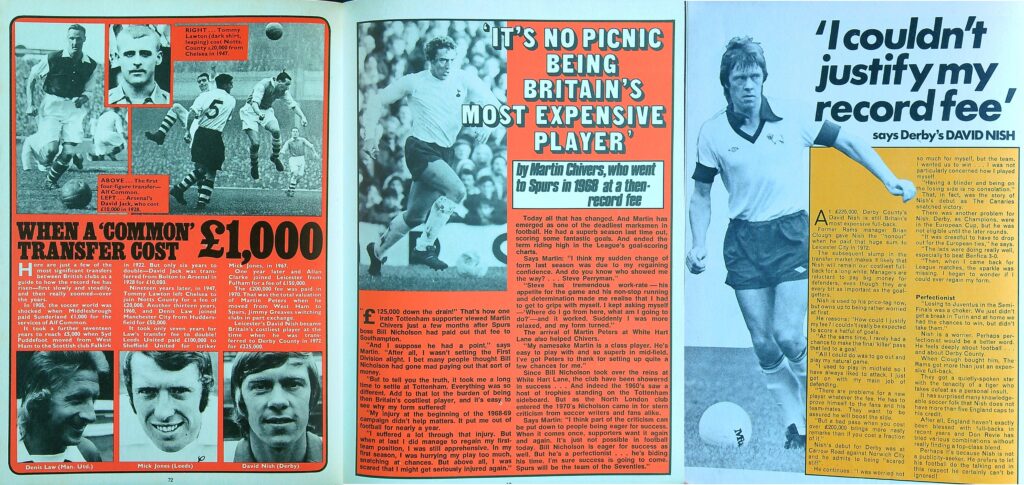
Above: Alf Common-Martin Chivers-David Nish Below: Denis Law-Jimmy Greaves/Martin Peters
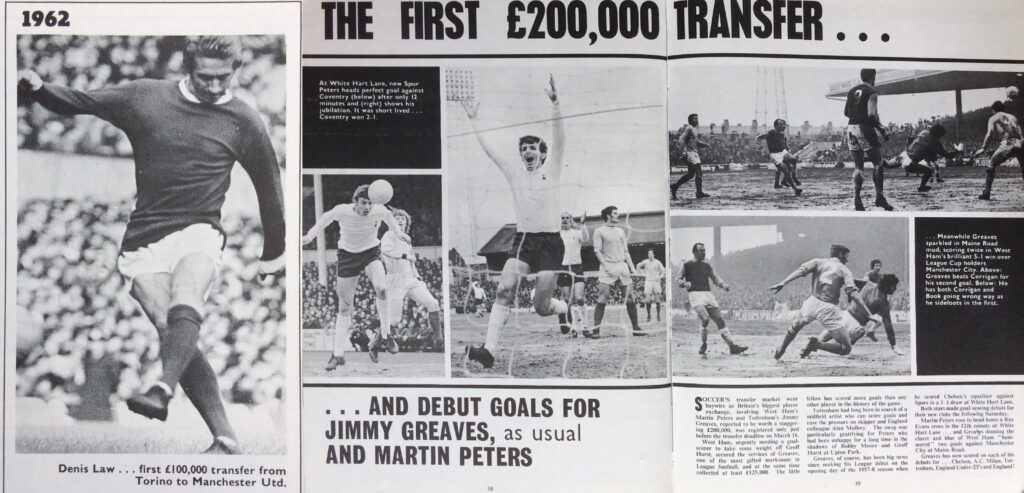
David Mills was the first domestic half-million player, moving from Middlesbrough to West Brom in January 1979 for what was regarded as an inflated price. A month later, England striker Trevor Francis was the million-pound record-breaker, and Nottingham Forest’s Brian Clough the manager who took the bold move – despite attempting to pay £999,999, add-ons took it over the £1m-mark. The player felt his club Birmingham “had priced me out of any chance of a move” until Clough paid the ‘incredible’ fee. An indication of English football’s economic climate at the time was that apart from champions Forest, only Coventry City were prepared to pay a million for Francis. However once the landmark figure had been reached, a spate of further £1m transfers followed over the next two and a half years.
Francis went on to score the 1979 European Cup-winning goal and despite injury problems, he continued to perform at the top level, scoring at the 1982 World Cup and spending most of the 1980s in Serie A before eventually returning to the Football League via Rangers. In September 1979 there were two more £1m transfers in a matter of days, with Wolves selling Steve Daley to Malcolm Allison’s Manchester City for nearly £1.5m and immediately buying Andy Gray from Aston Villa with the proceeds. Later in the season, Manchester City spent another £1m on Norwich striker Kevin Reeves. Meanwhile Clough was involved in several of the early million-pound moves, buying Coventry’s Ian Wallace and then Norwich’s Justin Fashanu, selling Garry Birtles to Manchester United in between and finally recouping the original Francis fee when he was sold to Manchester City in September 1981.
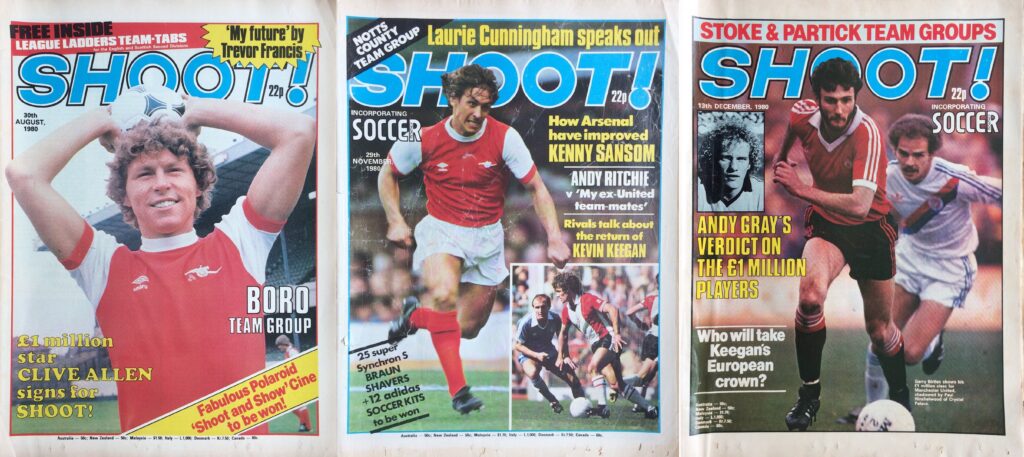
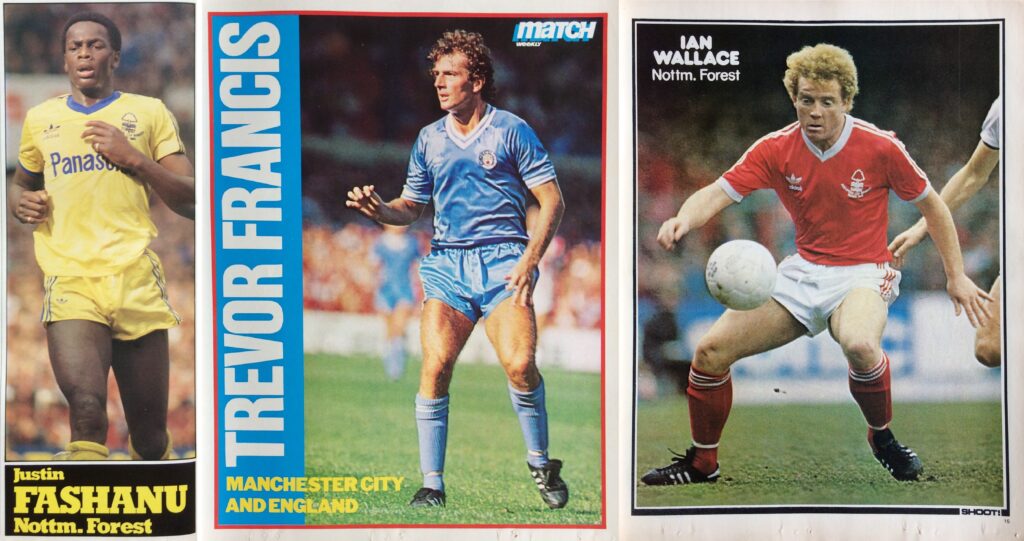
One of the strangest million-pound transfers took Clive Allen from QPR to Arsenal in the summer of 1980, only for the teenage striker to be swapped for Crystal Palace’s £1m-rated left-back Kenny Sansom without playing a competitive game. Allen’s later career as a prolific Football League goalscorer, notably after returning to QPR and then on to Spurs, did not translate to international level. Sansom was a rarity among the first million-pound players in fully justifying his price tag and winning 86 caps as England’s first-choice left-back until 1988.
Wallace was a steady if not spectacular goalscorer for Forest, but never reached the heights of his Coventry days, leaving for France in 1984 and failing to add to his three Scotland caps as a million-pound player. Gray fared better than his compatriot, firstly at Wolves and especially as a key part of Howard Kendall’s trophy-winning Everton sides of the mid-80s. Gray acknowledged that “a £1m transfer tests a player’s character” and that “too much can be expected of the big fee men.”

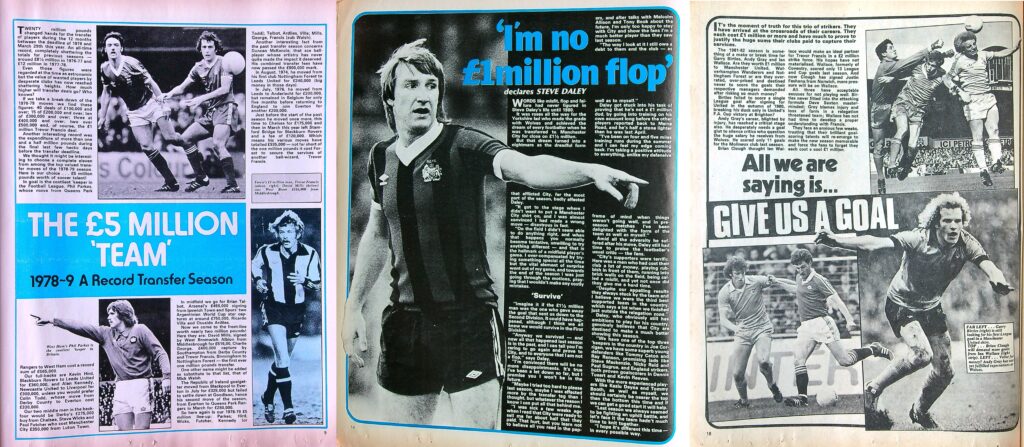
These deals stirred controversy and debate on valuing a footballer at a million pounds, with Manchester United’s Gordon McQueen declaring emphatically that “no one is worth £1 million” and joining Gray among others calling for a ‘transfer ceiling’. An editorial in the Playfair Football Annual 1980/81 echoed widespread fears in claiming “during the past 12 months the situation has started to show signs of getting out of hand.” The editorial went on, “These ridiculously high transfer fees are all the more disturbing at a time when many clubs are struggling to survive” and “some of the players with the magic seven-figure tags on their heads are not really world class.” The fortunes of the first million-pound players were certainly mixed, at best.
The expectation generated by the price tag seemed to weigh heavily on some of these players, who failed to reproduce their best form at their new clubs. Notably Daley’s career and reputation never recovered after his move to Manchester City, with new manager John Bond eventually selling him to the NASL’s Seattle Sounders for only £300,000 in February 1981 (and calling him “a big baby”). Daley’s team-mate Reeves was unable to make a significant impact at Maine Road while fellow strikers Birtles and the late Fashanu, in whose case off-field factors were at least partly responsible, also struggled for goals at their new clubs. Daley and Reeves were eventually reunited under Bond at Third Division Burnley in 1983/84.
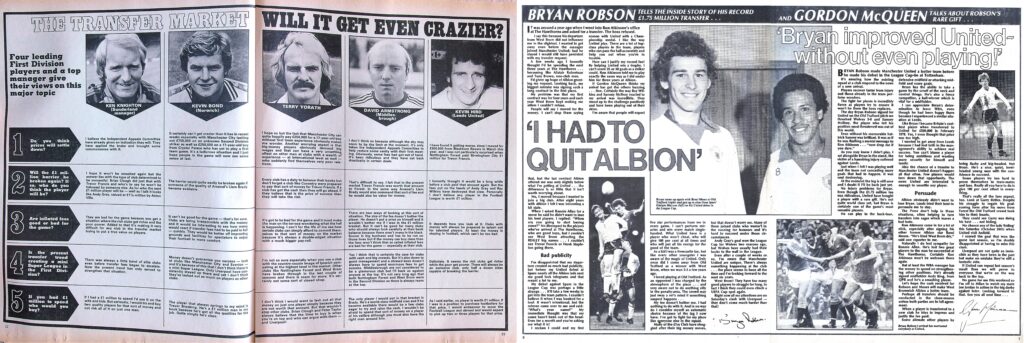
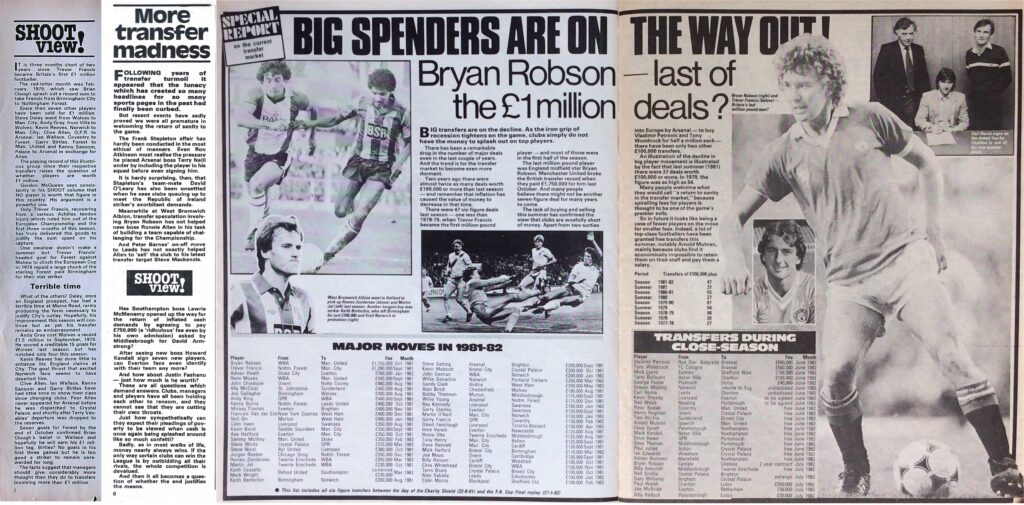
Bryan Robson meanwhile soon made his £1.5m fee look a bargain, after his former West Brom manager Ron Atkinson eventually succeeded in bringing him to Manchester United in October 1981. The England midfielder had complained at West Brom turning down an initial £1m-plus bid, wondering “heaven knows how much they want for me.” Robson established himself as captain and key player for club and country for the rest of the decade, into the early years of the Alex Ferguson era. After Robson’s record move, a change in the rules for transfer payments was introduced at the Football League A.G.M. of June 1982 which required half the fee to be paid up front and the balance within 12 months. Combined with a general recession, the decision reduced clubs’ spending power and brought a temporary halt to domestic million-pound deals for the next six years.
By August 1982 Shoot! magazine was noting the lack of even six-figure transfers that summer, reporting that “some sanity is being restored to the transfer market.” Instead, the trend until the Premier League was for foreign clubs to pay multi-million-pound fees for players from the Football League. Through the rest of the 1980s into the early 90s, Luther Blissett, Ray Wilkins, Steve Archibald, Gary Lineker, Mark Hughes, Ian Rush, Chris Waddle, Trevor Steven and David Platt were transferred to Spanish, Italian or French clubs for substantial and often record amounts – several of them later returning to the Football League for a smaller sum.
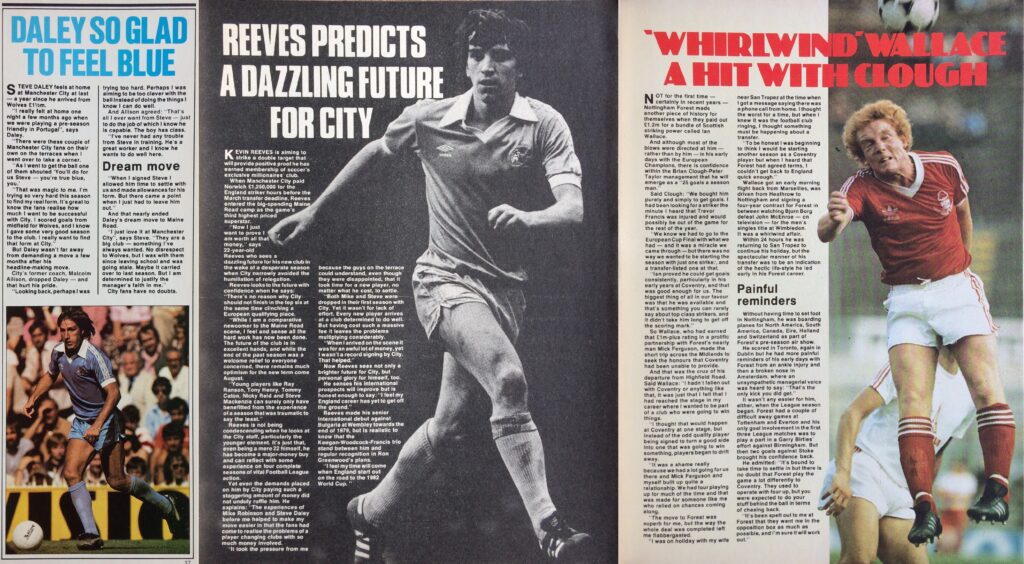
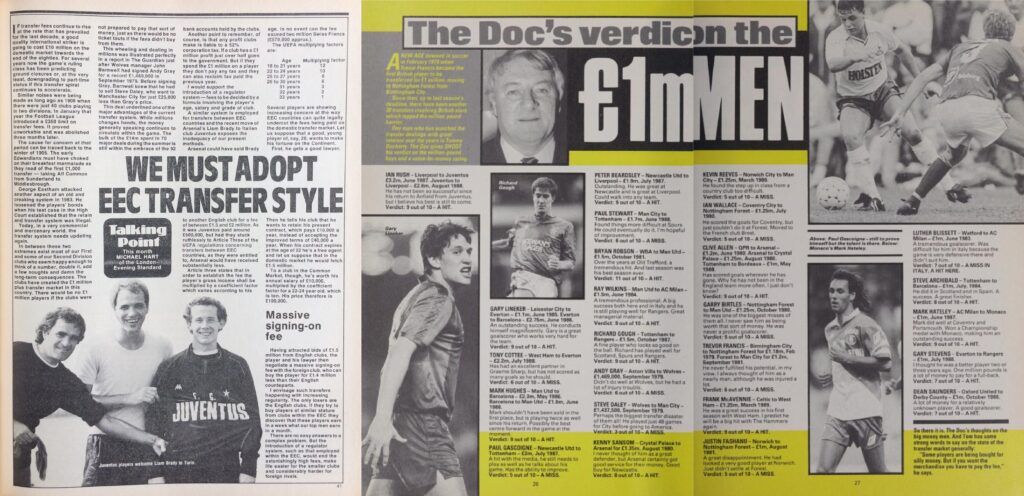
As England’s dominant club of the era, Liverpool didn’t spend £1m on a player until breaking the British record to bring Peter Beardsley from Newcastle for £1.9m in the summer of 1987. Tottenham and Everton also only bought their first million-pound players during the following summer, as first Spurs signed Paul Stewart before Paul Gascoigne and then Tony Cottee broke the £2m barrier in quick succession. Regular million-pound fees returned as English football regained prosperity toward the end of the decade and into the 1990s. Brian Clough was again prepared to spend over £1m on Kingsley Black, Carl Tiler and, more successfully, Teddy Sheringham – making the future England striker his first £2m signing in the summer of 1991 before selling him to Spurs a year later. Once more Serie A led the way when AC Milan bought Gianluigi Lentini for the first £10m-plus fee in 1992, but the creation of the Premier League soon took the English transfer market to new levels.
Before the Premier League kicked off, newly-promoted Blackburn signed Southampton’s Alan Shearer for a record £3.6m fee in the summer of 1992 – two years later they spent £5m on Norwich’s Chris Sutton. In January 1995, Manchester United bought Andy Cole from Newcastle for £7m and that summer Liverpool raised the record further by spending £8.5m on Nottingham Forest’s Stan Collymore. It was Shearer again whose signing by Newcastle in July 1996 smashed England’s £10m barrier in a £15m deal. That record remained until the 21st century, since when fees have continued to grow and reach £100m – making Trevor Francis’s million-pound transfer look like small change.
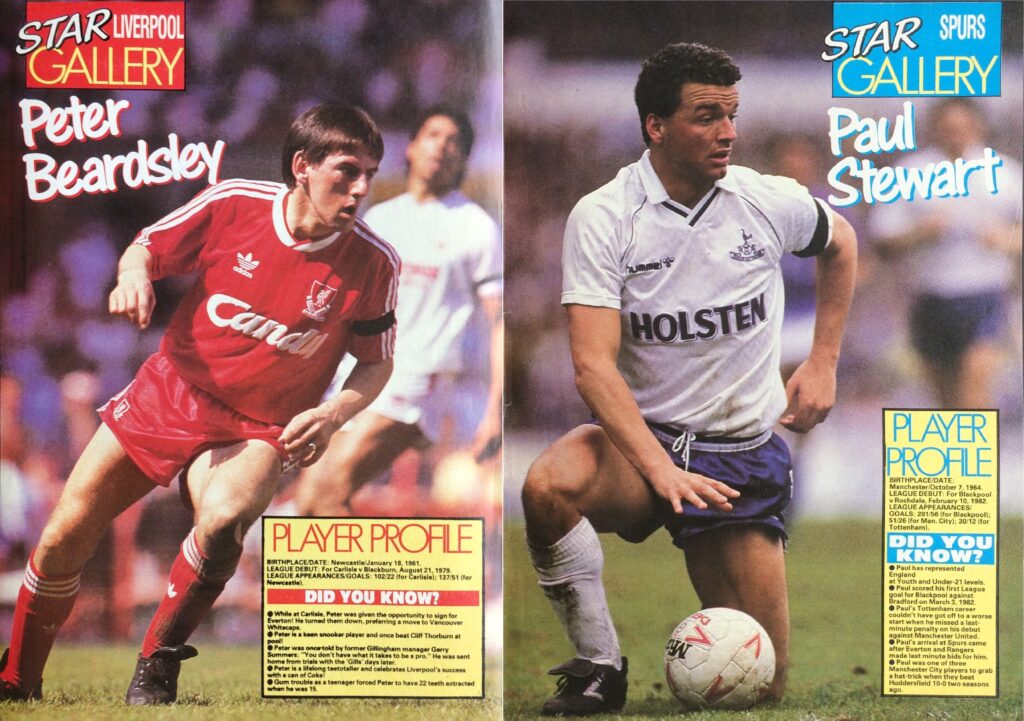
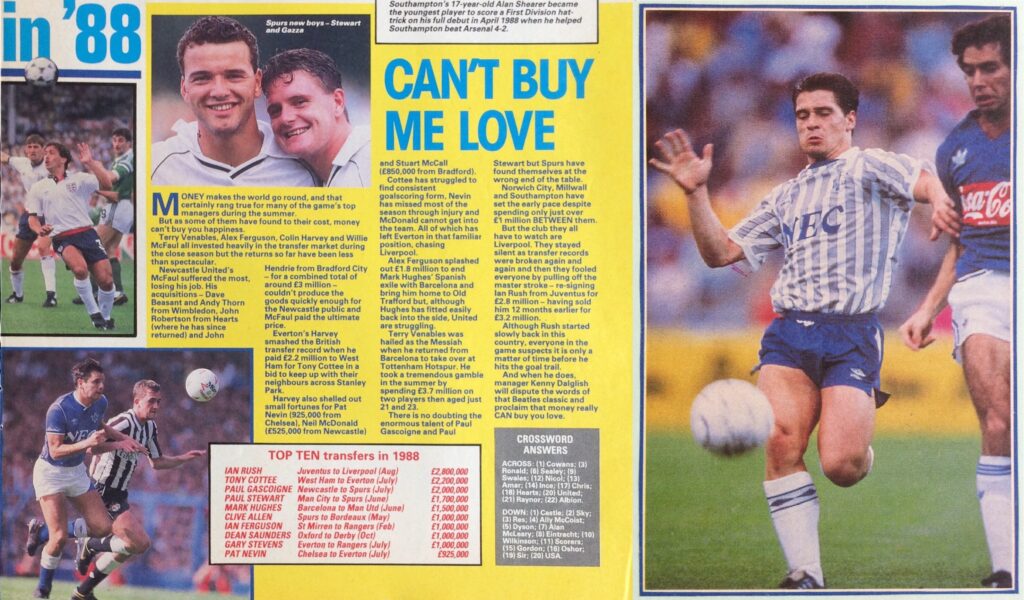
Several images courtesy of Miles McClagan (Flickr & twitter @TheSkyStrikers).
The history of the Football League’s transfer market and the arrival of the first million-pound players are among the topics discussed in my book Before the Premier League: A History of the Football League’s Last Decades.
